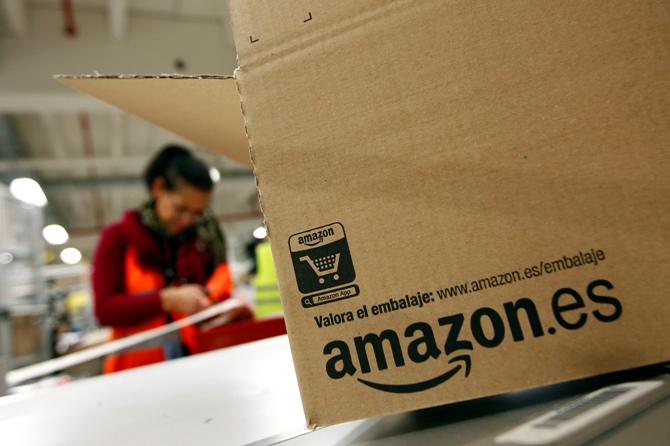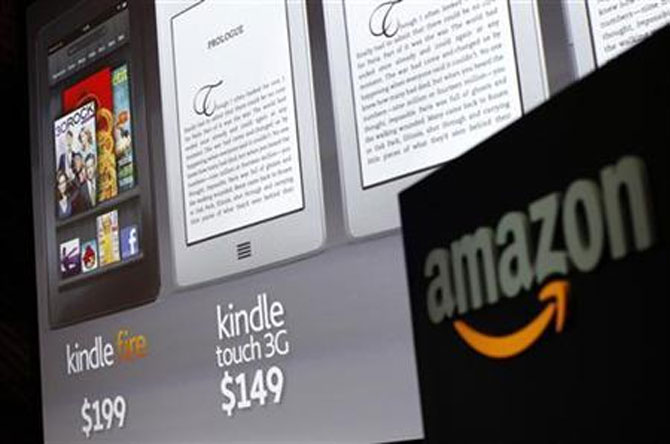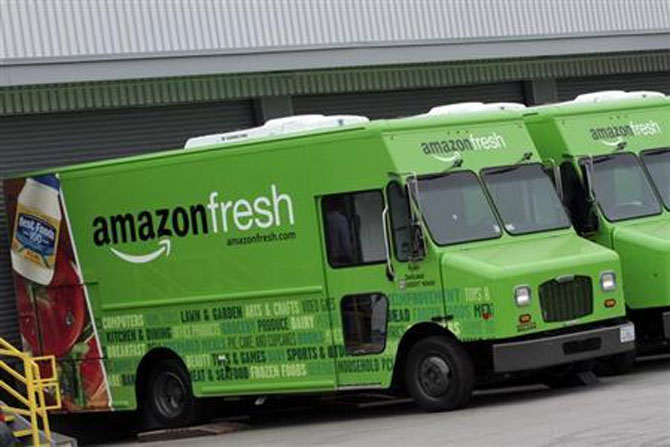
In just over 10 months of existence in India, Amazon, the biggest online retailer in the world, has become the largest in the country, too, in the number of products its e-commerce sites stock.
At 15 million products, Amazon India has overtaken home-grown e-commerce portals such as Flipkart and Snapdeal. While Flipkart offers close to 10 million products, Snapdeal offers four million-odd. US-based portal ebay offers over 1.5 million products in India.
Amazon, which debuted here with local brand Junglee.com in February 2012, launched its own digital marketplace in June 2013.
. . .

In an emailed response, Amit Agarwal, vice-president and country manager, Amazon India, said: “In June 2013, we launched with just two categories.
“But in just 10 months our total selection now stands at over 15 million products across 20 categories.
“The pool of sellers in our marketplace has grown more than 30 times since launch. “Today, over 75 per cent of units shipped are fulfilled by Amazon.”
Though Agarwal did not divulge the company’s financial numbers, Arvind Singhal, chairman of Technopak Advisors, said even if Amazon India was not in the $1-billion club now, it would enter it in the next 12-18 months.
. . .

While Flipkart has hit the $1 billion revenue mark, Snapdeal is expecting sales of $1 billion this year.
“Amazon has quietly ramped up its India operations and aggressively added merchants on its site.
“It will certainly fight to become the number one in the e-commerce space in India,” said Singhal.
Agarwal said Amazon was already the largest store in several categories, including books, music, video games, toys, home and kitchen appliances, bags, luggage and fashion jewellery.
. . .

“We have been able to make available over 165,000 products for next-day delivery across hundreds of pin codes in India.
“More than 50 per cent of our customer demand is eligible for next-day shipping,” Agarwal said.
He also said Amazon.in was the fastest growing mobile commerce site for Amazon globally.
Amazon has built two centres, in Bhiwandi on the outskirts of Mumbai and in Bengaluru, to extend its reach and delivery speeds.
. . .

Both Flipkart and Snapdeal, which have a head start over Amazon, are competing vigorously with the global giant.
A month before Amazon launched its marketplace in June last year, Flipkart put out its own.
In December, Flipkart came up with a one-day guaranteed delivery service just five days after Amazon.in.
Fashion-focused Myntra has also started same-day delivery in some cities. Snapdeal is looking to extend the service to cities beyond Delhi-NCR.
“Amazon has an unfair advantage over home-grown portals in global branding. Local players need to make a lot of effort to reach out to customers,” said Harminder Sahni, managing director at Wazir Advisors, a consulting firm.
. . .

However, Sahni says local portals, especially the niche ones like the apparel-focused Myntra and the furniture-centric Pepperfry, offer stiff competition to Amazon.
“In furniture and apparel, there are considerations beyond price and product. Customers also look at assortment and service.
"Somebody doing everything can not do as good a job as speciality retailers,” Sahni said.
"Technopak’s Singhal believes that the supply chain is the single biggest issue for all e-commerce portals.
“The logistics companies here have strengths in the B2B (business-to-business) space and not in B2C (business-to-consumer).
“This is going to slow the growth of e-commerce companies unless somebody invests in B2C logistics here,” said Singhal.
. . .
(With inputs from Shivani Shinde Nadhe)